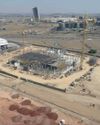
On 5 June 1947, US Secretary of State George Marshall announced the European Recovery Program (later known as the Marshall Plan) in a famous commencement address at Harvard University. He said that it was “logical” for the US to do whatever it could to restore the region to economic growth, “without which there can be no political stability and no assured peace”. The plan, funded by the US government and administered by a Europewide commission, spent $13bn over four years and engendered the highest rate of economic growth (about 35% per year) in European history. When the work of the plan was finished, the economies of every Western European country had not just returned to pre-war levels of growth and economic development but surpassed them. Ever since, the Marshall Plan has been widely hailed as a triumph, an example of foreign aid as an enabler of economic revitalisation on a grand scale.
The plan had four components. The first involved the way aid money was gathered and spent. The second was the intensive involvement of the private sector. Third, each European government made economic policy reforms to support its domestic private sector. The fourth was a regional coordinating body that handled the distribution of funds among countries. At the completion of the Marshall Plan period, European agricultural and industrial production were markedly higher, the balance of trade and related “dollar gap” much improved, and significant steps had been taken toward trade liberalisation and economic integration.
A Marshall Plan for Africa?
This story is from the {{IssueName}} edition of {{MagazineName}}.
Start your 7-day Magzter GOLD free trial to access thousands of curated premium stories, and 9,000+ magazines and newspapers.
Already a subscriber ? Sign In
This story is from the {{IssueName}} edition of {{MagazineName}}.
Start your 7-day Magzter GOLD free trial to access thousands of curated premium stories, and 9,000+ magazines and newspapers.
Already a subscriber? Sign In

THE HEALTH OF SA'S MEDICAL SCHEMES
As the Covid-19 pandemic abates, finweek takes a look at the financial performance of some of the largest players.

The effect of Gilbertson's departure
With Ntsimbintle Holdings now the major shareholder of Jupiter Mines, it could change SA’s manganese industry.

Making money from music
Why investors are increasingly drawn to the music industry.

Conviction is key
Sandy Rheeder plays a critical role in Mukuru’s mission to open up financial services to the emerging consumer market in Africa through tailor-made technology solutions and platforms.

The post-pandemic toolkit
How CFOs can use technology to support growth.

Big city living exodus
Mini cities like Waterfall City and Steyn City are redefining city-style apartment living.

Big compact, big value
Handsome, with a hefty level of standard specification, the roomy Haval Jolion compact crossover is a great value proposition.

On barriers to entry
There are various ways in which a company or sector can achieve competitive dominance. They usually make for good investments.

Fear and greed in one index
To buck the trend, when markets are hot or cold, is a tough thing to do. However, it can deliver solid returns.

Africa's largest data centre facility coming soon
Vantage Data Centers plans to invest over R15bn for its first African data centre facility in Attacq’s Waterfall City.